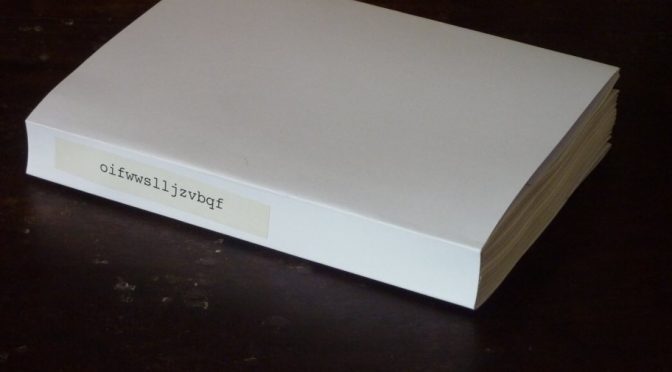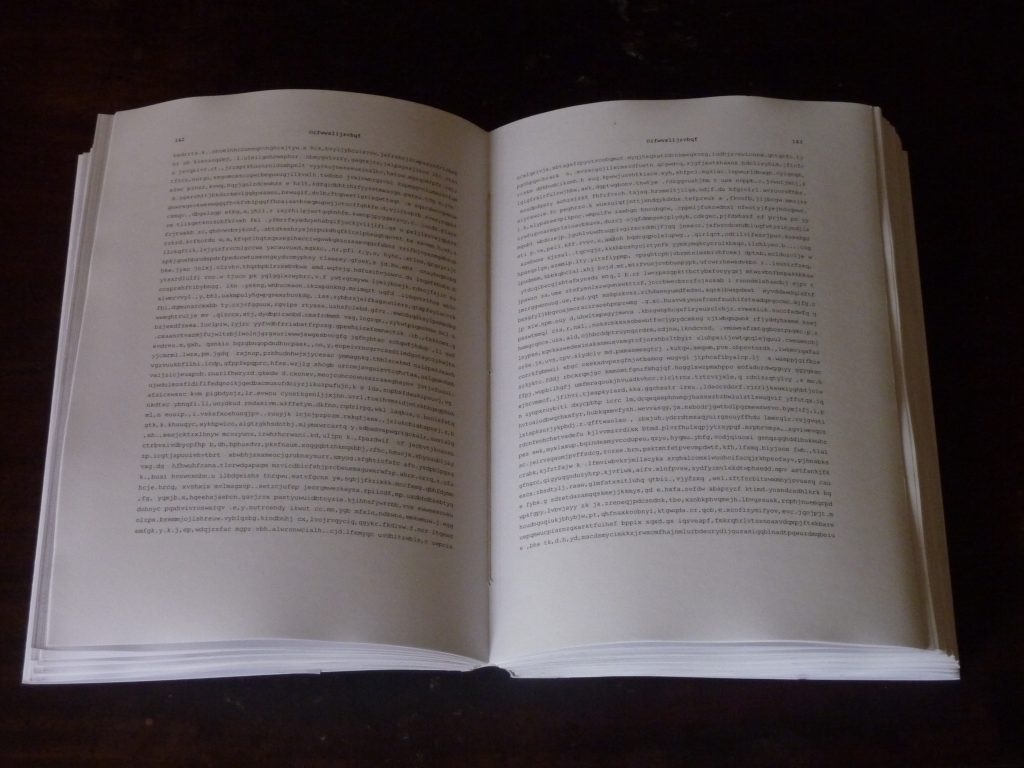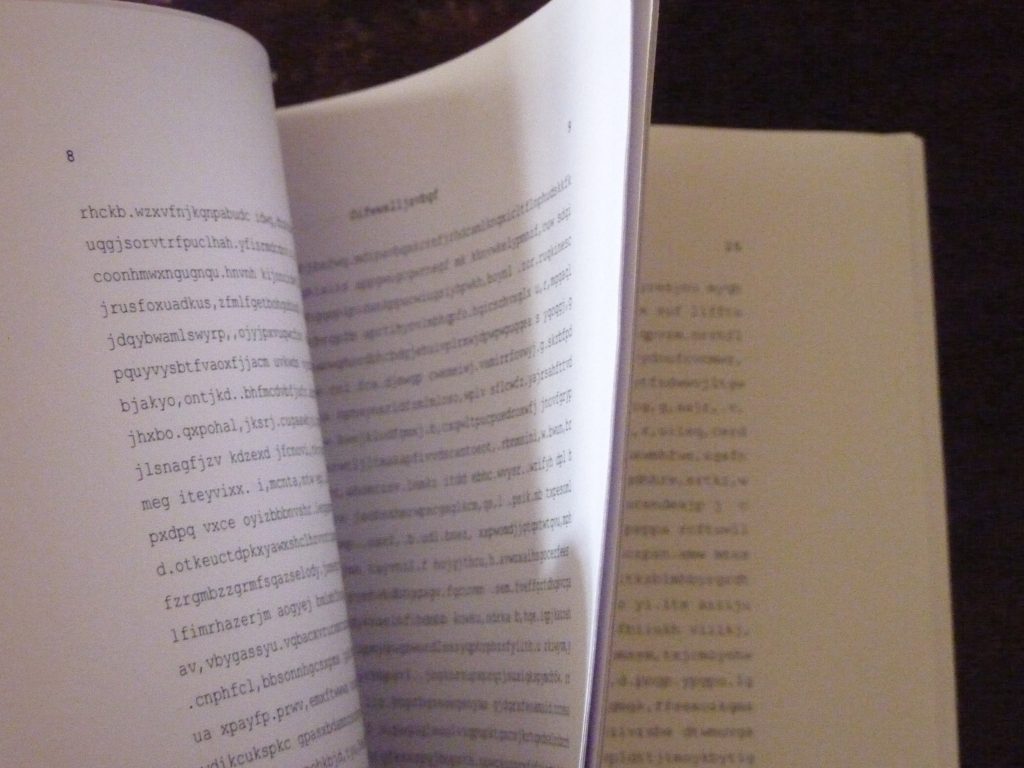I came across Jonathan Basile’s Library of Babel a while back. This online project has created (in virtual form) the “universal library” imagined by Borges, containing in this case, every possible page of 26 letters. Of course, that means that it does indeed contain this blog post – at least the beginning of it.
I am always interested in the different visceral experience of reading on screen in contrast to reading on the page; the tactile and visual nature of a physical book engages with the ergonomic side of the brain to trigger different memories of the text and its content. Whenever I do get a book or an article online, I usually print it and bind it into a book or pamphlet to put on my bookshelves. Then, I remember its location on the shelf and that helps me to remember its content.
So it seemed a natural development of Basile’s work, for me to start imagining a partial physical implementation of it. I posted a comment on the forum there, setting out an idea for an art installation:
…to build a full-size complete hex.
You would build the hexagonal room. The four bookcases would be filled with actual books, printed with the actual texts. The spines would be labelled with the shelfmark.
I am thinking that you would choose a hex that contains an “interesting” text but not indicate where in the hex that text is to be found.
Visitors would be free to take books off the shelves and browse them.
The doorways would be roped off, but you could look through into the next hexes. They would also have shelves and books but if people are not allowed in then there would be no need to make the books real, they could be “fakes”. You could also make the subsequent hexes just visible through the next doorways to give an impression of the continuing library.
I think it would be most effective if access were through a spiral staircase in the centre of the hex.
If you were super ambitious you could do more than one hex joined together in the same way. Just rope the doorways at the limits of the full implementation and surround with “stage set” hexes to give the illusion of continuity.
I know that this would be an ambitious project, even to do one hex: a hexagonal room, with two doors and four walls of shelving. Each wall with five shelves. Each shelf with 32 books. Each book with 410 pages.
So today’s project was rather more modest. I chose just one book, pretty much at random (though I made the room reference much shorter than is normal, just to make it all a little less overwhelming). It is the 20th volume on the 4th shelf of the second wall in room pgfhuiijrcovsndzdkmgbfvirsavodmbcigepsjfd.
I downloaded the text of the book, formatted and set it up, generated a PDF, printed and bound it. I made it A5 format, sewn in signatures, with stiff card wraps. I chose white card to continue the minimalist theme. I made a spine label with the title, oifwwslljzvbqf, and an “ex libris” label to stick to the inside front page.
As an art object it is very “dada”, kind of pointless and a bit foolish – when I was halfway through making it I really thought I should give up. I toyed with a hardback binding, but in the end I thought the minimalism and anonymity of the white card suited the project better. I think that the effort and concreteness of the finished book, which you can hold in your hand and leaf though, points up the insanity of the universal library. And the book is big – 410 pages is a lot. If just one book full of random gibberish is too much to contemplate, what of the complete hexagonal room with 640 of them?





I found a similar project:
http://www.dunwich.org/babel/
http://translate-babel.webs.com/ This website is a very real way of translating the gibberish. If you want to actually put meaning to those 410 pages, this is your best bet
Here is this post in the library.
https://libraryofbabel.info/bookmark.cgi?a_book_from_the_library,_blog_post